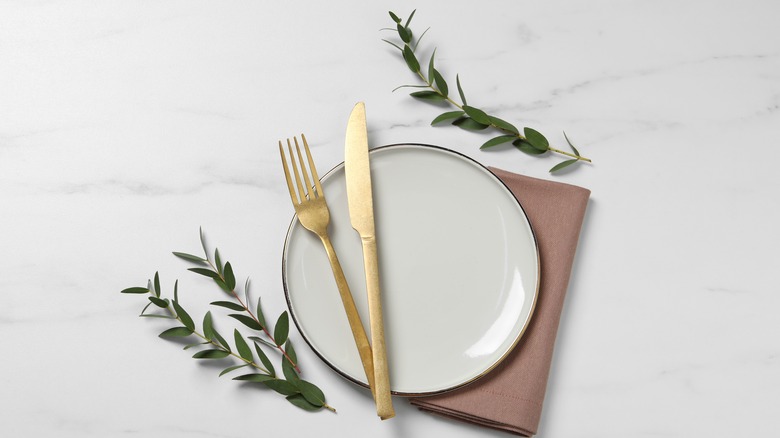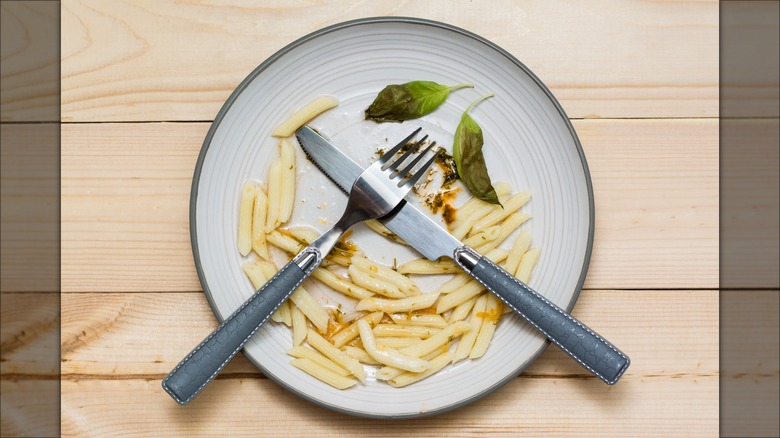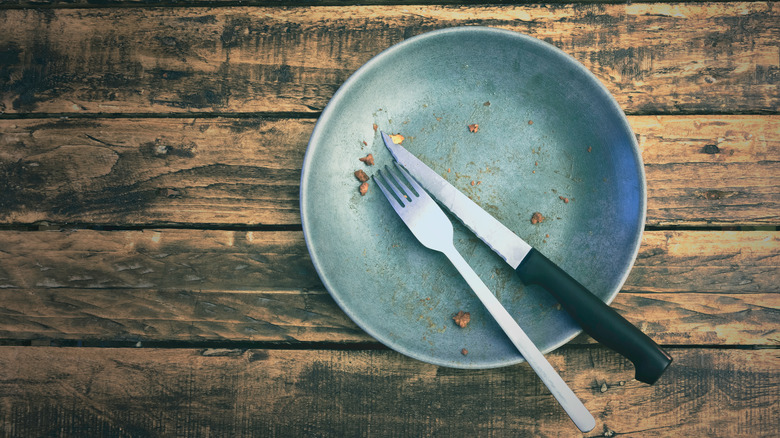American Vs Continental: There's A Difference In Utensil Etiquette
The history of etiquette is long and mostly French, which is how we ended up with the pinky-out, landed gentry brand of fancy manners that one conjures mentally when uttering this word. But, pioneers that we are, Americans love being just a little bit different from the rest of the world (which is why we're out here measuring things in feet — another story entirely). America has its own brand of utensil etiquette that is distinct from the Continental European style and is geared toward people who are right-hand dominant. The main difference between domestic and continental etiquette really comes down to how you hold and handle your knife and fork; more on this later.
If you need further proof of etiquette as part of the very marrow of American culture, consider this: Our first president and founding father actually wrote an etiquette pamphlet in his teenage years — and if George Washington is concerned with etiquette, then we should probably consider it quintessentially American. But it really wasn't until the 1920s that Americans got their own hard-and-fast rules about dinner table manners.
American vs continental utensil rules
Most of us have made table etiquette mistakes before and could probably stand to improve our game – because who really knows what to do with your napkin at the end of a meal unless you're taught these things? First things first: American-style manners are primarily concerned with the performance and display of utensils. Continental etiquette dictates that when one is finished with their meal, the fork is placed tine-side down over the knife in an X shape; this signals to the server that the diner is done. In American utensil etiquette, one should place the fork and knife side by side, with the fork tines facing upward and the knife's blade toward the diner.
The biggest difference between American and continental styles may be their tenets concerning cutting and eating. American etiquette says that you should cut one bite of food, put the knife down on the plate's edge, and then switch the fork from left hand to right hand in order to bring the bite to your mouth. This honestly seems more tedious than the continental style of utensil handling (sometimes referred to as "double-fisted"), where the diner holds the fork in the left hand and the knife in the right, cutting as they go.
Etiquette is influenced by a 'little spark of celestial fire'
The American way of dining etiquette is less often used — even in the States, and usually depends on a person's background. Good decorum is still taught, of course, but even for those who don't have terrible table manners, there's always an opportunity to improve one's behavior. This is all to say that there isn't one style of etiquette that is superior to another; all cultures and countries have their own way of exhibiting good etiquette, and all are equally valid.
Since the American way of displaying etiquette does tend to favor people with right-hand dominance, those who are left handed may prefer the efficiency of the continental way. But ultimately, the bottom line in etiquette is simply courtesy and mindfulness. When one is present with their fellow diners, good etiquette comes easily. So, don't worry if you don't follow American or continental rules exactly to the letter. As sixteen-year-old George Washington wrote in "110 Rules of Civility & Decent Behavior in Company and Conversation" (his manners manifesto): "Labor to keep alive in your breast that little spark of celestial fire called conscience."


